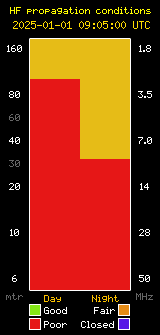Packet Capabilities at LCPW
We have moved the club VHF packet node from the Mesa to La Cumbre Peak West. At nearly 4,000′ above sea level, this station has a Winlink gateway that can gate mail between RF and the internet (Starlink-capable and perfect for emergencies), as well as a few other features, including a local keyboard chat room! Check it out if you have a TNC or sound card modem for VHF packet on 145.050. The main node is K6TZ-2 but the following aliases will connect you directly to the various services: LCPW (main node), TZPBBS, TZCHAT, TZRMS (Winlink) Note that BPQ is a little different than Kantronics. Commands like MHEARD and CONNECT (to hop) require a port number (in this case the port number to use is 2). More details in the welcome message. Thanks to Doc, W6EW for donating the Kenwood TM-D700 to the club. If you are interested in learning more about VHF packet radio and other digital modes, join us on Tuesday nights for the Digital Communications & Technology Net and consider joining our group mailing list. -Levi, K6LCM K6TZ Trustee











